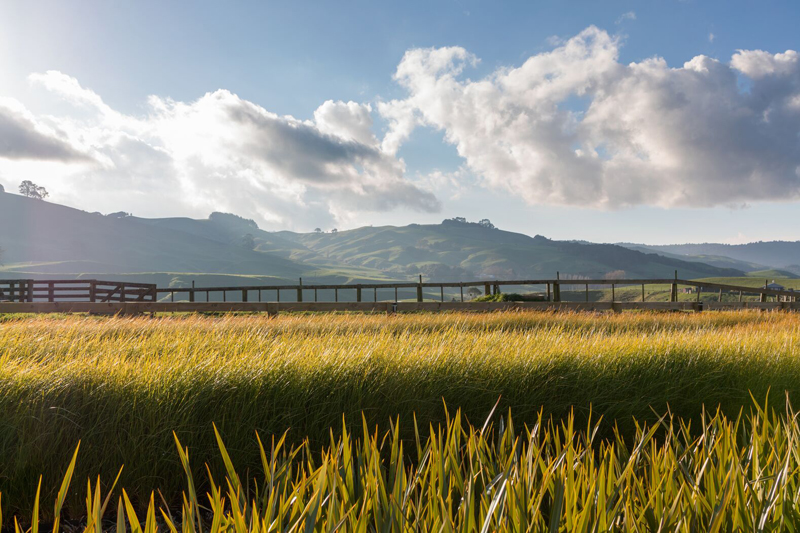Plan and prepare now for spring and summer grazing
After a long winter, fences and pastures may be a little worn for the wear. Taking steps now to plan and prepare for the upcoming grazing season will give producers an advantage going into spring.
Saturday, 01 January, 2022

After a long winter, fences and pastures may be a little worn for the wear. Taking steps now to plan and prepare for the upcoming grazing season will give producers an advantage going into spring.
To get fencing and pastures up to par, Gallagher Territory Manager Owen White suggests some tips for pasture managers to get a plan in place. White, a native of northwest Montana, handles technical support, sales, and educational trainings for Gallagher customers across Montana and parts of Wyoming and Idaho.
Walk the fence line
According to White, first up on the spring to-do list should be walking the fence line.
"This is the best thing they (pasture managers) can do," says White. "Check all the fence wires, posts, braces, and grounding system."
For temporary fences, White says make sure wires are not broken or frayed. Likewise, check for rusted or broken wires on permanent fences as well.
"I always check my grounds," White says. "Then run my energizer to make sure everything is very conductive and I have the proper voltage going through the fence lines."
Spring is also a good time to make fence improvements, White notes.
"It's when your ground's the softest and easiest to work with," says White. "If you need to replace a post or let's say have a fence line you are going to be changing out, that's the time to do it."
Pasture improvements
Along with fencing, pasture grasses may require some help in the spring as well. Soil testing provides a means to better understand what these needs are and determine whether fertilization is necessary.
"If you're going to fertilize, you really should do soil testing because you can find out exactly what mix of fertilizer to put on," White says. "Getting fertilizer on in a timely fashion in spring, along with moisture, will optimize the growth potential of your grass and legumes."
White recommends taking 15-20 soil samples for up to a 100 acre pasture. For larger pastures, more samples will be needed to provide a representative sample.
For those interested in reducing reliance on expensive nitrogen fertilizer, frost-seeding legumes is a great pre-grazing season option to improve pastures and increase forage quality. Frost-seeding involves broadcast seeding grass or legume seed on existing pastures when the ground is still frozen.
"The best time to do this is in early February through early March when you get thaws and freezes," says White. "This helps work the seed into the soil for your germination. Allow a minimum of 6 weeks to 2 months after germination and it starts coming up, before you start grazing on it so you allow the roots to get established in the soil."
Spread out manure
Manure management is also something to be considered as the animals go back to pasture. Uneven distribution of manure piles leads to uneven pasture growth and grazing.
To encourage better grazing distribution, drag pastures as soon as manure pats are no longer frozen. Areas with highest stocking densities, such as winter feeding areas, should be done first.
"This helps to break manure up so it absorbs back into the soil faster and better," says White.
As an added benefit, recycled nutrients from manure will help to reduce pasture fertilizer needs. For those producers who are unable to drag pastures, White suggests composting manure as another option.
Rotate pastures, control weeds
An additional spring concern for pasture managers is weed control. This is where, White notes, rotational grazing comes into play. Rotational grazing is a management strategy which includes both grazing and rest periods for pastures to maximize forage growth and encourage desirable plants and plant parts.
"You can utilize rotational grazing to optimize your grass growth and minimize your weed infestations," says White. "As you rotate around, you get your animals off there before you do any damage to the plants or soil. This will keep the weeds from coming up and that way we don't have to use chemicals."
The benefits seen from implementing a rotational grazing program include more forage, more plant diversity, greater control of grazing heights, and opportunities to extend the grazing season. White remarks, some of his customers who raise cattle have increased their pasture's carrying capacity anywhere from 22-30% by making the switch to rotational grazing methods.
White recommends the following Gallagher products for those interested in setting up a rotational grazing program as part of their spring pasture prep:
- Wire: Turbo Wire
- Accessories: Geared Reels
- Posts: Ring Top Posts, HD Pigtail Posts, HD Treadin Posts, or Tumblewheels
Ongoing management
Once a good management plan is in place, a pasture manager's work is still not finished. As the season progresses, steps will have to be made to prevent overgrazing.
White advises producers to develop a flexible grazing plan. "You have to watch the grass the first few times through and see how it works," he says. "You have to give it enough resting period after you pull your animals off. Have at least 3-4 paddocks to go before you come back to that one so each has at least 3-4 weeks rest."
The better care pastures receive, the better environment they will provide and more productive they will be for grazing livestock. Taking the initiative to plan and prepare now, will ensure pasture managers are prepared for whatever the coming spring and summer grazing has in store.